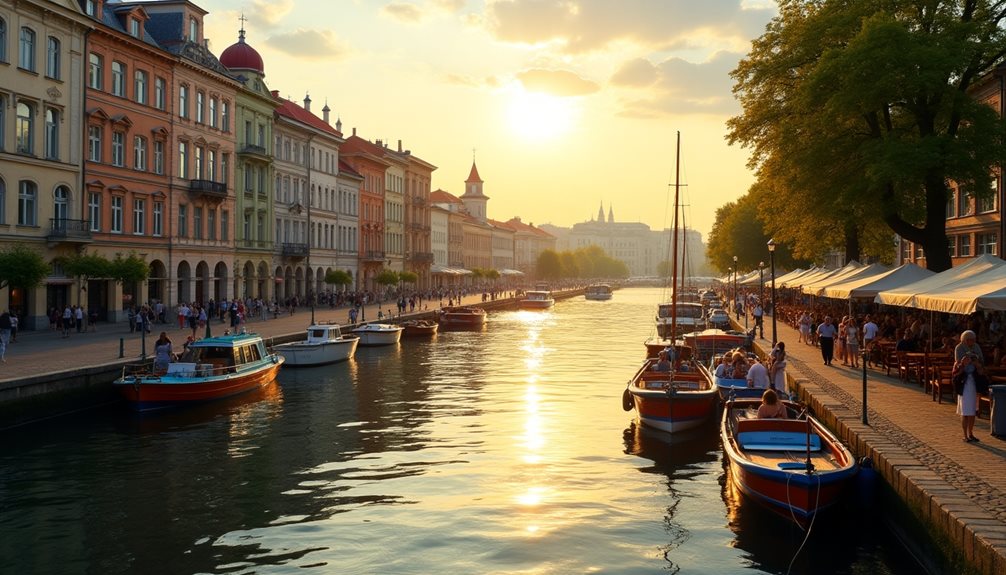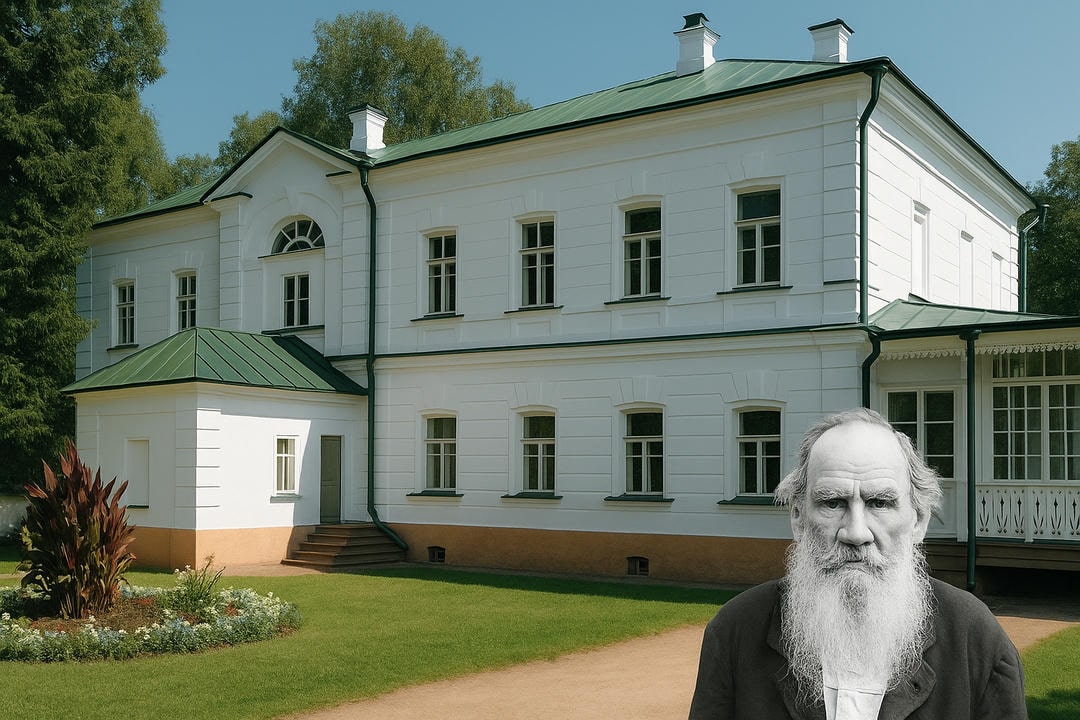Chukotka, Russia, an enigmatic region at the northeastern edge of the world, presents a fascinating juxtaposition of untouched natural beauty and resilient indigenous traditions. Its sweeping tundras and formidable mountain ranges provide a backdrop to the unique lifestyle of the Chukchi and Yupik peoples, whose cultural practices remain intricately tied to the land’s formidable climate. As interest in eco-tourism rises, the challenge of balancing environmental conservation with cultural preservation grows ever more pertinent. How does this remote area navigate the complexities of modern development while honoring its ancestral roots?
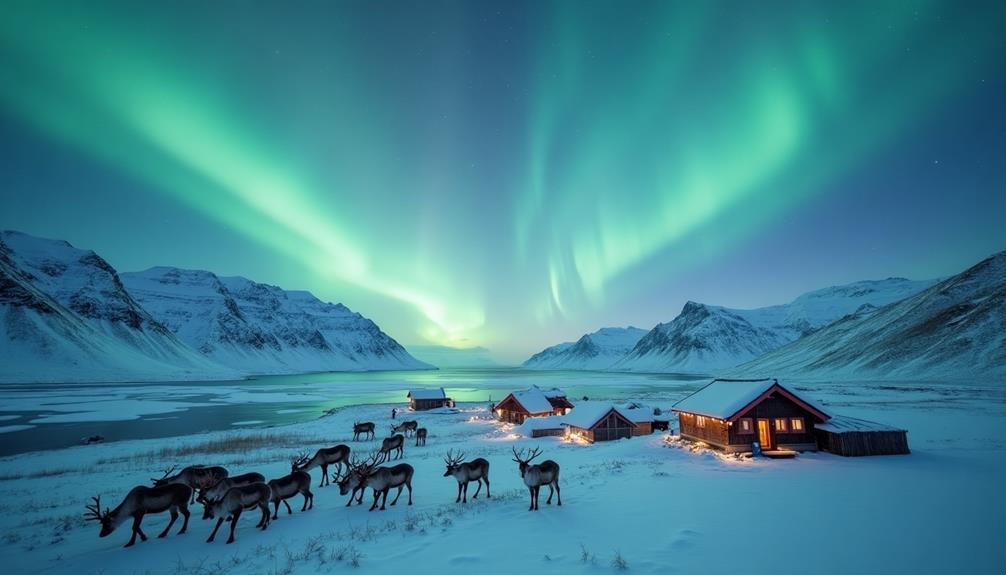
Chukotka, located in the far northeastern corner of Russia, is defined by its distinct cultural and geographical characteristics. This region, marked by a harsh Arctic climate and vast tundra, is home to indigenous communities such as the Chukchi and Yupik, whose traditional ways of life are deeply connected to the land and sea.
Daily life in Chukotka reveals how these communities cope with isolation while maintaining their rich cultural heritage. The Chukotka Autonomous Okrug offers a unique blend of natural beauty and cultural significance, attracting tourists eager to explore its pristine landscapes and participate in vibrant festivals celebrating indigenous languages and traditions.
The local population demonstrates resilience in the face of environmental challenges, including the impacts of climate change on wildlife conservation. Their deep understanding of the land enables them to navigate these difficulties creatively.
Chukotka’s geography features expansive tundra, rugged mountains, and unique natural formations that shape the lives of its residents. The region experiences long, cold winters and brief, mild summers, presenting both challenges and opportunities. The interplay between permafrost and seasonal variations influences daily routines and cultural practices.
Amidst this stark beauty, Chukotka’s rich biodiversity thrives within its tundra and coastal ecosystems. Indigenous communities have developed sustainable resource management practices over generations. However, ecological threats necessitate conservation strategies that integrate traditional knowledge with modern science to protect both the environment and cultural heritage.
History
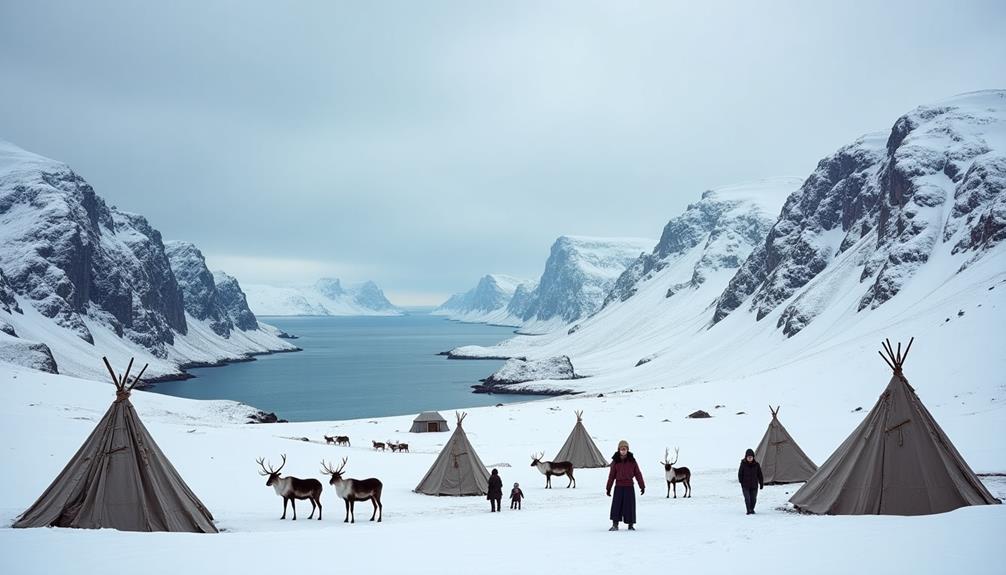
The history of Chukotka is closely tied to the lives of its indigenous peoples, including the Chukchi, Evenk, and Koryak, whose traditions have evolved in response to the harsh Arctic environment over millennia.
Russian exploration in the 17th century marked a significant turning point, as explorers navigated the formidable landscapes and established settlements that profoundly impacted indigenous communities. These interactions not only transformed the demographic and cultural landscape but also laid the groundwork for future socio-economic changes in Chukotka.
Indigenous peoples have cultivated rich cultural traditions uniquely suited to their Arctic surroundings. Central to Chukchi traditions is a deep connection to the land and sea, expressed through their languages and traditional hunting practices. These elements are vital for survival and play a crucial role in cultural preservation. Community resilience is embedded in their social structures, enabling them to navigate modern challenges while maintaining their identity. Seasonal hunting rituals and storytelling serve as living testaments to their enduring heritage.
The Chukchi, Evenk, and Koryak peoples have etched their histories into the Arctic region. The Chukchi culture emphasizes a strong bond with the sea and tundra, where reindeer herding and marine hunting are essential. Evenk traditions focus on nomadic reindeer herding and shamanistic practices, reflecting a symbiotic relationship with their environment. The Koryak people have demonstrated resilience through ingenuity in adapting to harsh conditions. Their indigenous languages are vital repositories of ancestral knowledge and worldviews.
As Russian explorers ventured into Siberia’s vast expanses, they encountered these indigenous peoples who had long inhabited the land. These expeditions were not solely about territorial expansion; they also facilitated cultural exchanges where knowledge was shared and new worlds were charted. The harsh climate required Arctic navigation skills, which Russian explorers developed by observing indigenous practices.
In the 17th century, Russian exploration marked a pivotal era characterized by a quest to understand and map the continent’s farthest reaches. Cossack expeditions driven by the allure of the Siberian fur trade engaged in both conquest and cultural exchange, navigating the challenging terrain through maritime skills and Arctic mapping. The blending of Russian and indigenous knowledge enriched understanding of the region.
The establishment of settlements in Chukotka by Russian explorers transformed the landscape and impacted indigenous populations significantly. Settlement patterns driven by resource exploitation altered traditional livelihoods, leading to varying degrees of cultural assimilation while also sparking efforts among indigenous groups to preserve their identities. Despite demographic changes due to an influx of settlers, indigenous populations maintained a resilient spirit, striving to uphold their cultural identity amid external influences.
Examining the urban versus rural distribution in Chukotka reveals distinct patterns shaped by geographical constraints and cultural practices. The harsh Arctic environment has resulted in low population density, with many communities adhering to traditional rural lifestyles. Urban migration has been limited due to infrastructure challenges and economic disparities. The few urban centers that exist are sparsely populated, primarily focused on mining and fishing near natural resources rather than urban development.
Despite these challenges, rural areas maintain cultural vibrancy rooted in indigenous traditions. Observations reveal a resilient spirit among Chukotka’s inhabitants as they balance modern economic demands with preserving their rich cultural heritage.
Economy
The economy of Chukotka is closely tied to its natural resources and traditional practices, with mining, fishing, and reindeer herding at its core.
Local communities rely significantly on the extraction of gold, tin, and tungsten, which provides employment opportunities but also poses challenges to the fragile Arctic environment. The rhythmic cycles of fishing and reindeer herding highlight a continuity of cultural practices, showcasing the indigenous knowledge and resilience that sustain the region’s way of life.
In the rugged landscapes of Chukotka, economic activities are deeply connected to both the land and cultural heritage. Gold mining thrives in remote valleys, where miners endure harsh conditions for their rewards. Tin and tungsten extraction, while less glamorous, are vital industries that tap into the region’s rich mineral deposits.
The fishing industry serves as a cornerstone of local sustenance, flourishing along the icy coasts where traditional methods blend with modern techniques. Reindeer herding remains an ancient livelihood that is both a vibrant cultural expression and an economic necessity, with herders skillfully navigating the tundra.
These activities reflect a balance between resource utilization and the preservation of Chukotka’s unique identity, embodying a spirit of freedom and survival.
Culture and Society
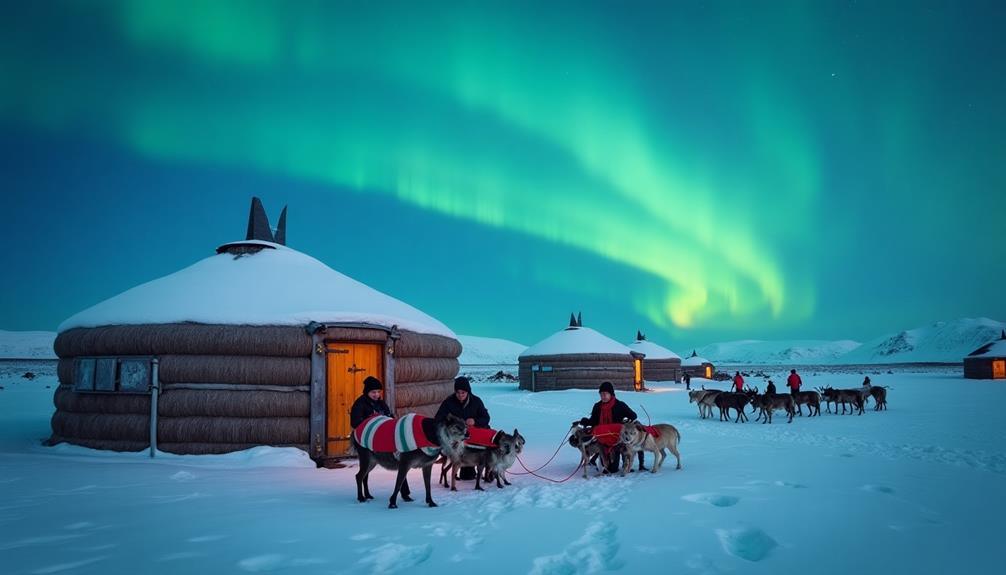
Chukotka’s cultural landscape is shaped by the enduring traditions of its indigenous communities, such as the Chukchi and Yukaghir. These groups continue to speak their native languages and engage in customary practices like reindeer herding and marine hunting.
Traditional Practices and Modern Influences
Observations reveal a dynamic interplay between traditional lifestyles and modern Russian culture, increasingly evident through contemporary education systems and improvements in public infrastructure. Recent investments in these areas have facilitated a gradual transformation within Chukotka, creating a unique blend of historical and modern elements that shape its society.Rich in cultural heritage, Chukotka’s indigenous communities maintain vibrant traditions that define their social structures. The artistry of traditional crafts showcases meticulous techniques passed down through generations. Seasonal rituals, deeply rooted in the natural rhythms of the Arctic, mark the passage of time and foster a sense of unity.Storytelling traditions, rich with ancestral wisdom and myth, serve not only as entertainment but also as living archives of communal knowledge. Hunting practices, essential for survival in this harsh environment, are imbued with respect for nature and the animals. Communal gatherings reinforce bonds and nurture a collective spirit of freedom and resilience.
Linguistic Heritage
The cultural practices emerging from Chukotka’s indigenous societies are closely linked to their linguistic heritage. The Chukchi and Yukaghir languages serve as vessels for preserving cultural identity and storytelling traditions. Observing these communities reveals how indigenous art forms, such as intricate carvings and textiles, celebrate ancestral narratives and values.Traditional hunting practices remain vital, not only for sustenance but also as rites of cultural continuity. These practices reflect a profound respect for the environment, deeply embedded within the natural rhythms of the Arctic. Through participant observation, it becomes evident that these cultural expressions empower the indigenous peoples of Chukotka, fostering a sense of freedom and enduring identity.
Modern Transformations
While deeply rooted in traditional heritage, Chukotka’s society is undergoing significant transformations influenced by broader global trends. Sustainable development initiatives are increasingly visible as communities embrace renewable energy sources like wind and solar to reduce reliance on imported fossil fuels. Technological innovations in education and healthcare are improving access and quality of services.However, transportation challenges persist due to harsh climates and vast distances, complicating internal mobility and external trade. Urban migration trends are reshaping societal structures as younger generations gravitate toward regional centers seeking opportunities while striving to maintain cultural ties within evolving urban landscapes.
Cultural Interplay
The influence of Russian culture on local traditions is both profound and multifaceted. Daily life in the region reveals a fusion of Russian folkways with indigenous customs, creating a unique cultural identity. Traditional crafts exhibit Russian motifs alongside native designs, reflecting a symbiotic exchange.Cultural festivals celebrate this blend, where Russian music and dance intermingle with native performances. Language influence is evident as Russian is often interspersed with Chukchi dialects, shaping communication and identity. Culinary traditions also reflect this dual heritage; dishes meld Russian recipes with local ingredients, offering a rich gastronomic experience that fosters a sense of freedom amidst heritage preservation.
Infrastructure Development
Investing in infrastructure and public services has become pivotal in reshaping Chukotka’s cultural landscape. Observations reveal a transformative wave where infrastructure projects symbolize progress rather than mere construction. Improved public transportation systems enhance connectivity across vast terrains, granting residents newfound mobility.In healthcare, significant improvements are noted as clinics are equipped with modern facilities that enhance community well-being. Educational initiatives bridge gaps, nurturing a generation poised for economic development. These changes resonate deeply, reflecting a cultural shift where traditional lifestyles intertwine with modern advancements.For the people of Chukotka, these investments represent not just survival but also a pathway toward prosperity.
Natural Wonders
Beringia National Park invites explorers into its vast wilderness, where the remnants of ancient migrations inspire curiosity and discovery. The park’s pristine environment showcases the region’s unique flora and fauna, making it a prime destination for eco-tourism.
Wrangel Island serves as a vital sanctuary for polar bears and diverse wildlife, embodying the essence of untouched nature. Its significance is recognized globally, attracting visitors eager to witness its ecological treasures.
El’gygytgyn Lake, formed by a meteor impact, offers geological insights that intrigue scientists and tourists. This natural wonder adds to Chukotka’s allure, providing a glimpse into the Earth’s history.
Cultural Experiences
Visitors can engage in thrilling activities such as dogsledding across the snowy tundra, guided by skilled mushers who share stories about the land and its traditions. Whale watching expeditions allow for intimate encounters with majestic marine life, including gray and bowhead whales that breach the icy waters.
Participating in local cultural festivals reveals the vibrant life of indigenous communities. These events showcase traditional dances and crafts that celebrate ancestral lore, offering travelers a deeper understanding of Chukotka’s rich heritage.
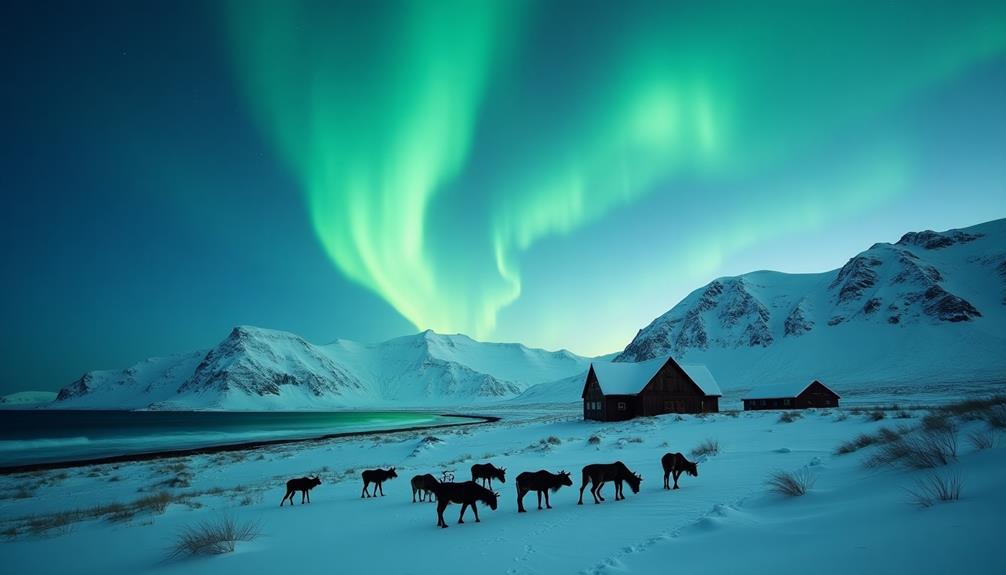
The Chukchi Peninsula, with its rugged terrain and expansive tundra, presents a region of striking geographical and cultural significance within Russia. Known for its commitment to Chukotka wildlife conservation, it serves as a sanctuary for diverse Arctic species.
Indigenous language preservation efforts highlight the region’s cultural richness, ensuring that the voices of native communities endure. Observing climate change impacts firsthand, Chukotka stands as an essential site for understanding environmental shifts in the Arctic.
Chukotka stands as a testament to the delicate balance between nature and culture. Immersing oneself in this pristine wilderness provides an unparalleled journey into the heart of the region’s unique identity. The combination of adventure and cultural connection invites travelers to explore with respect and openness, ensuring that their experiences in this remote corner of Russia are both memorable and transformative.


